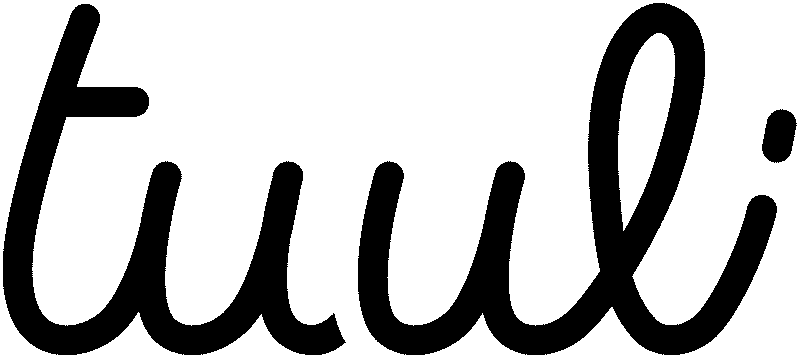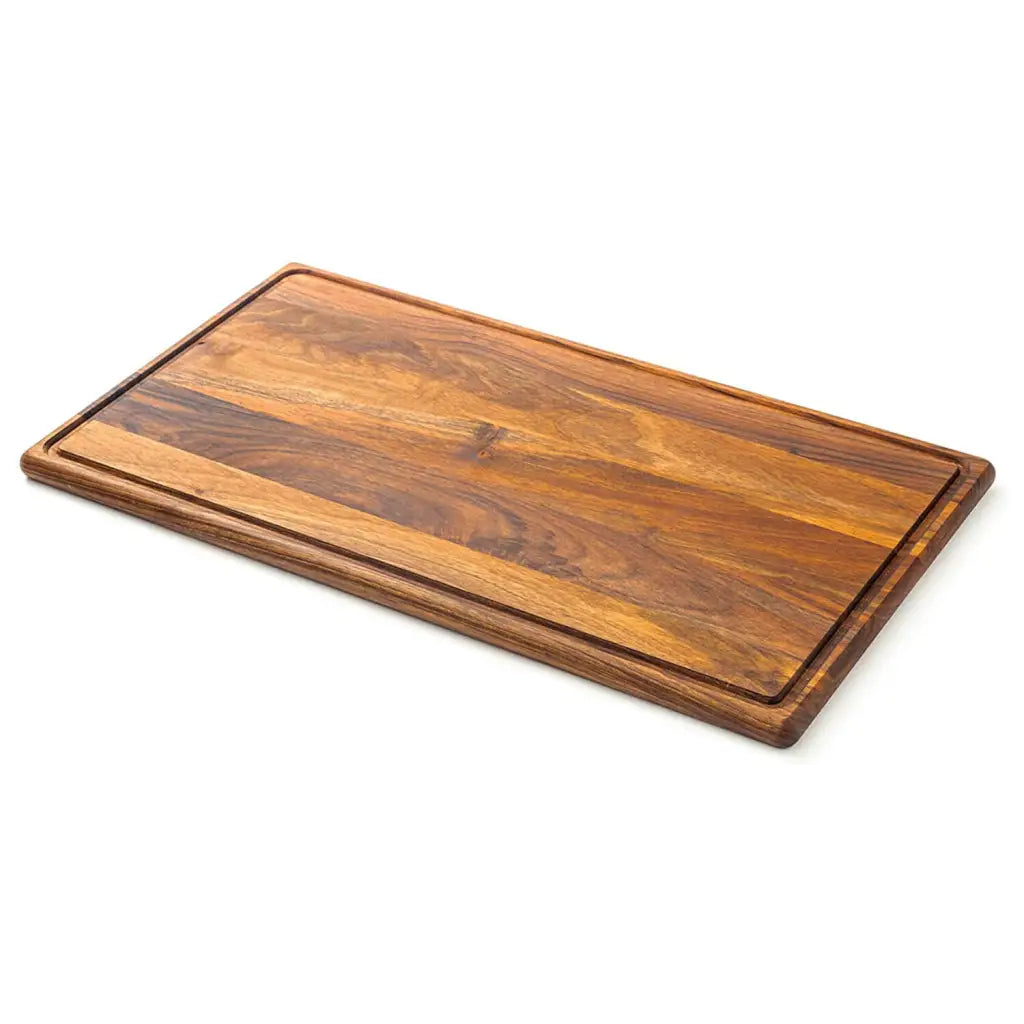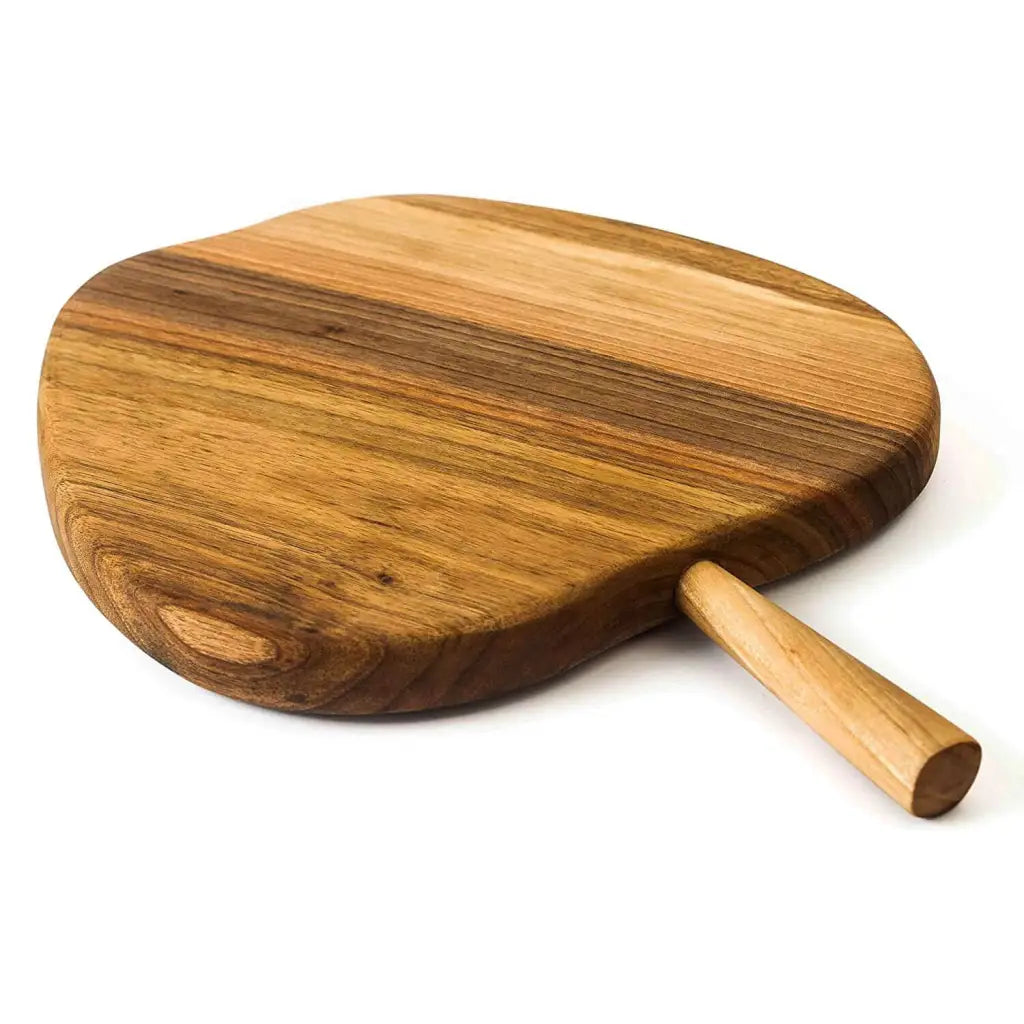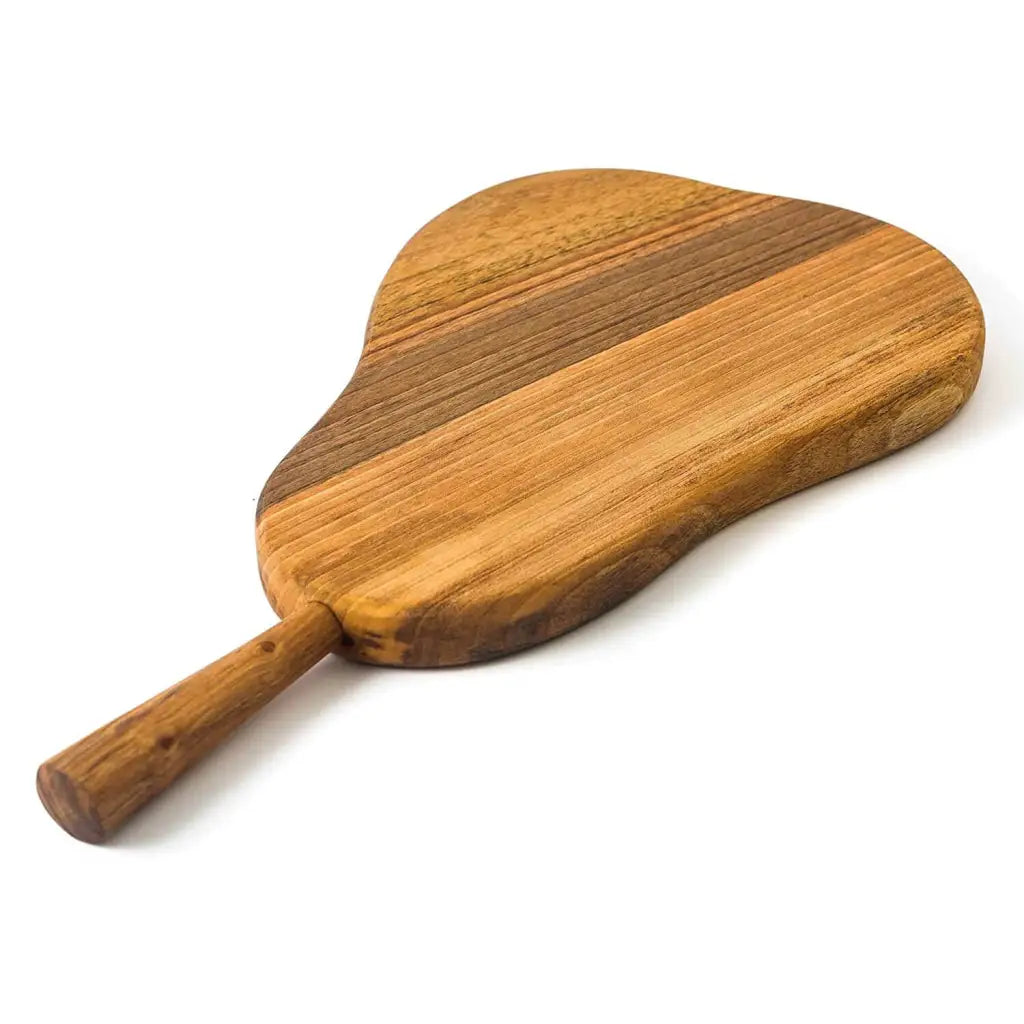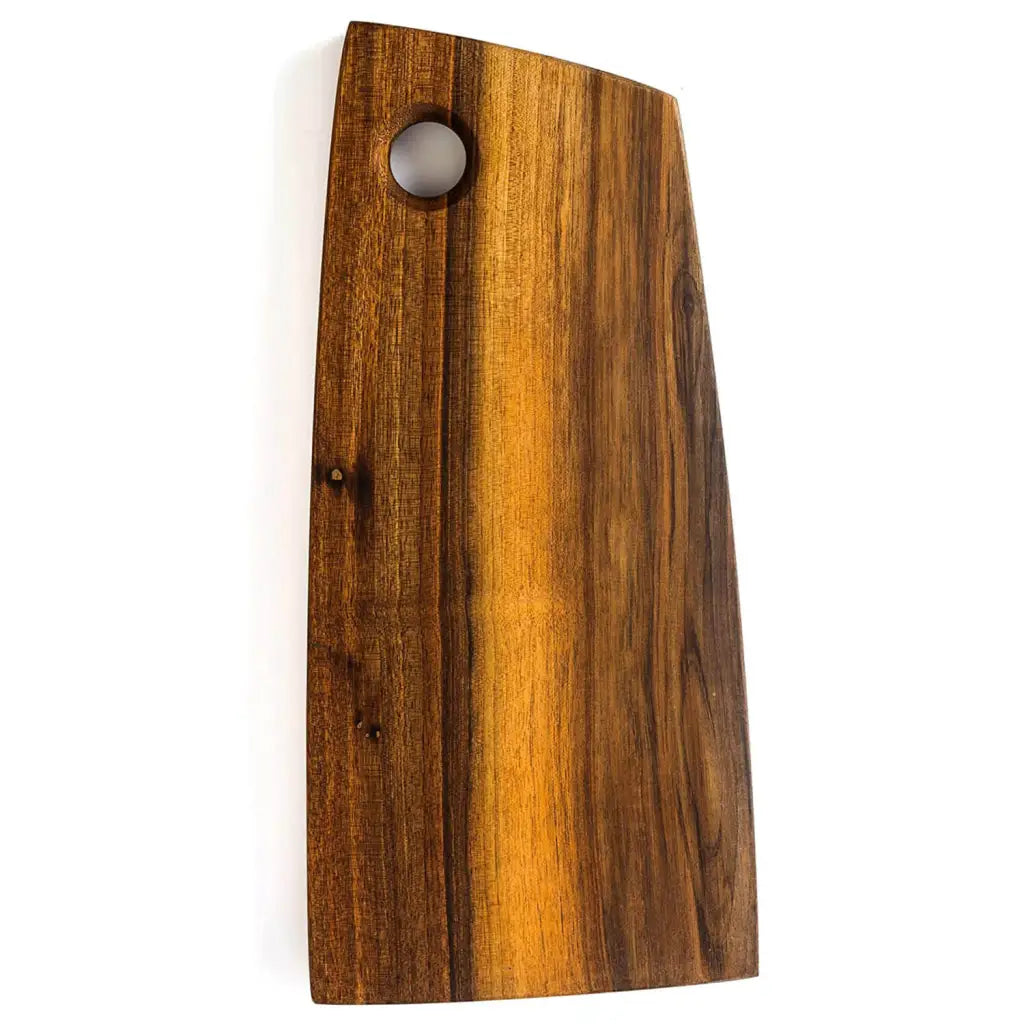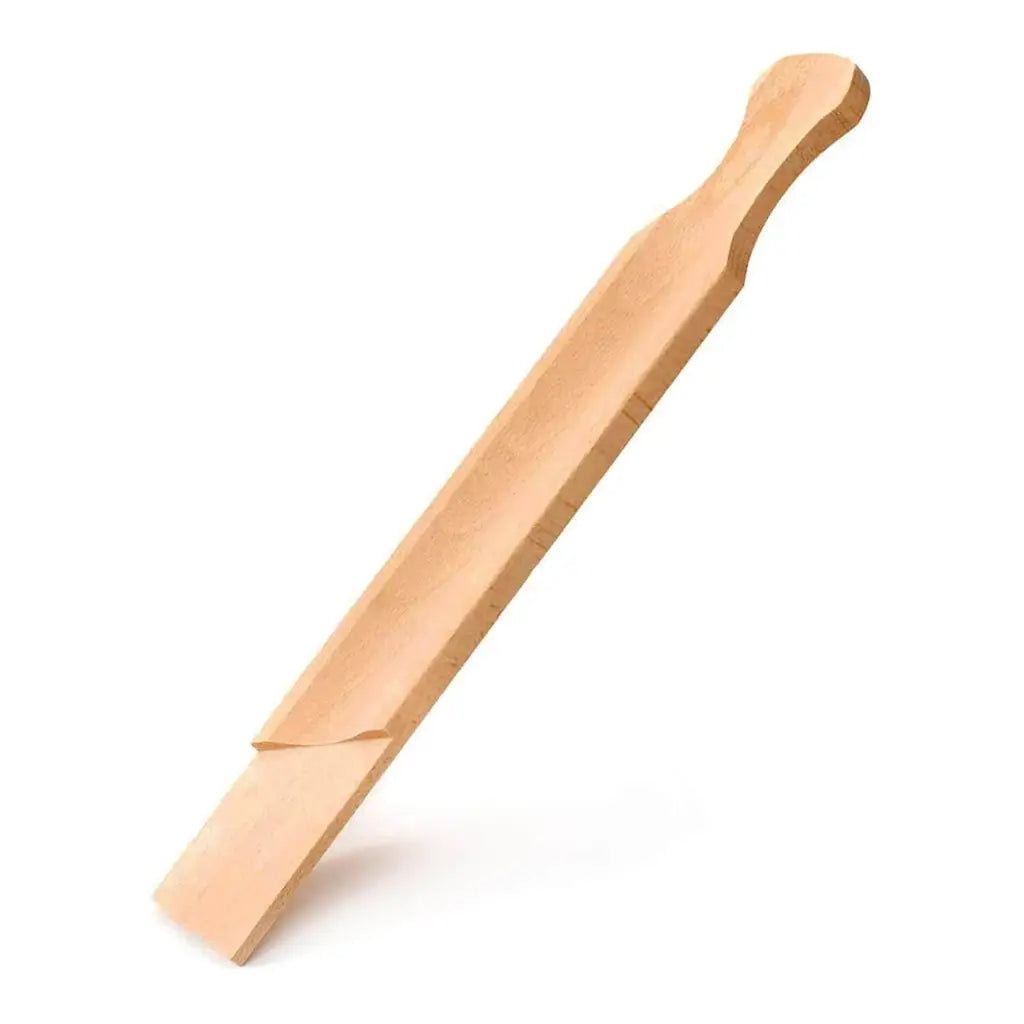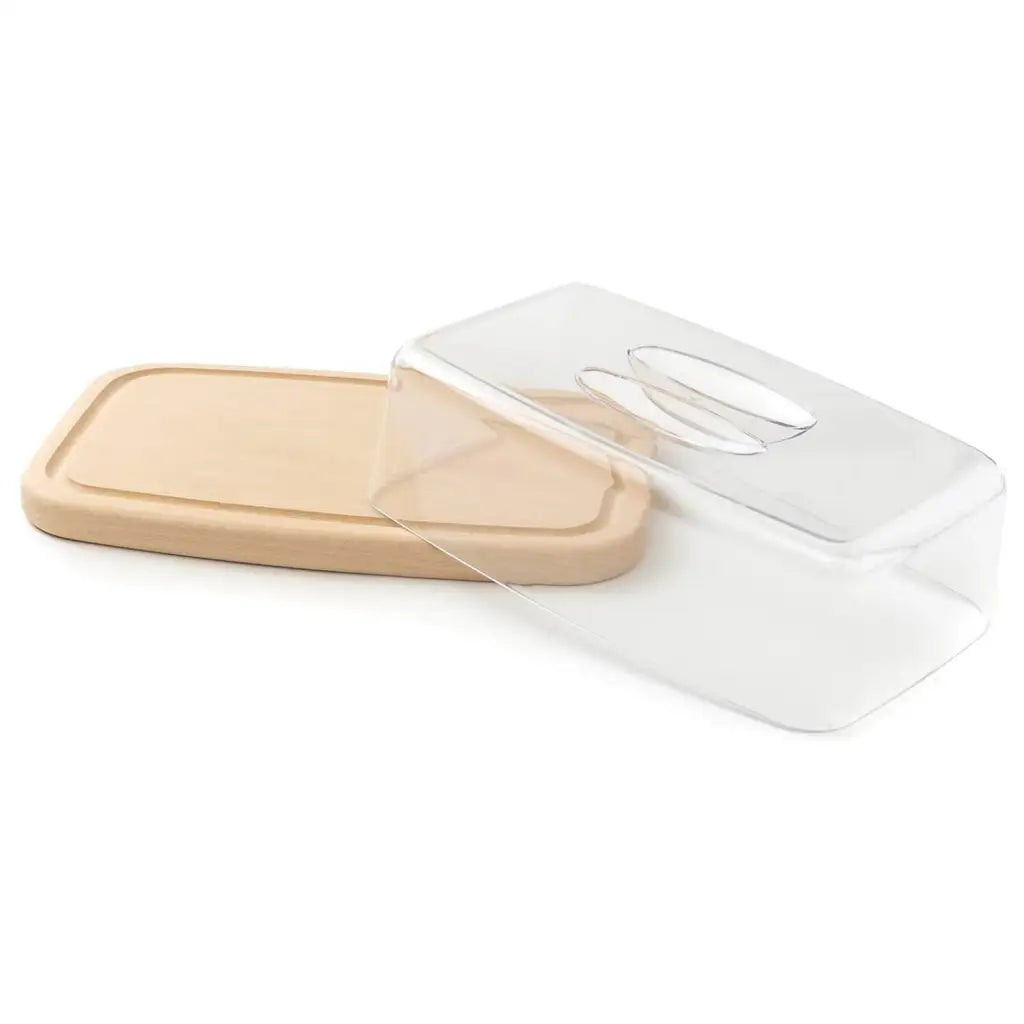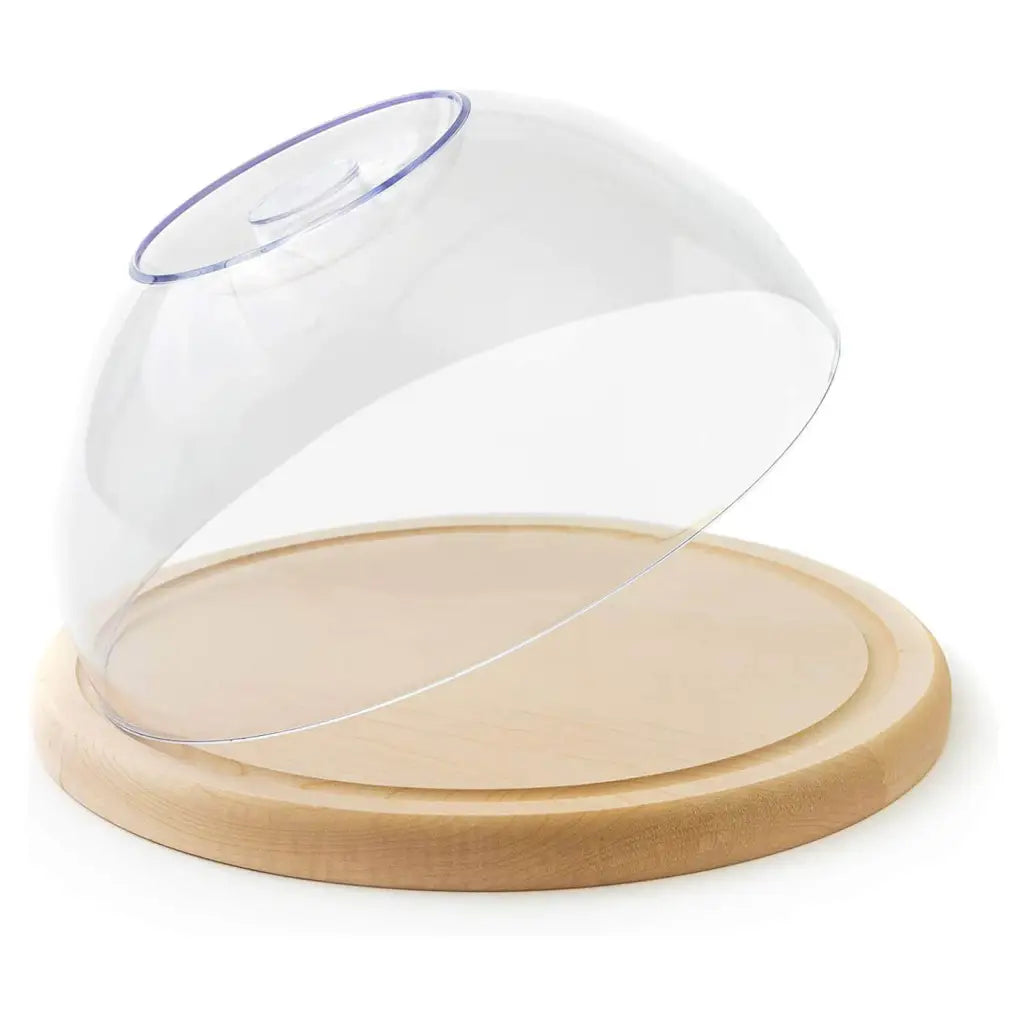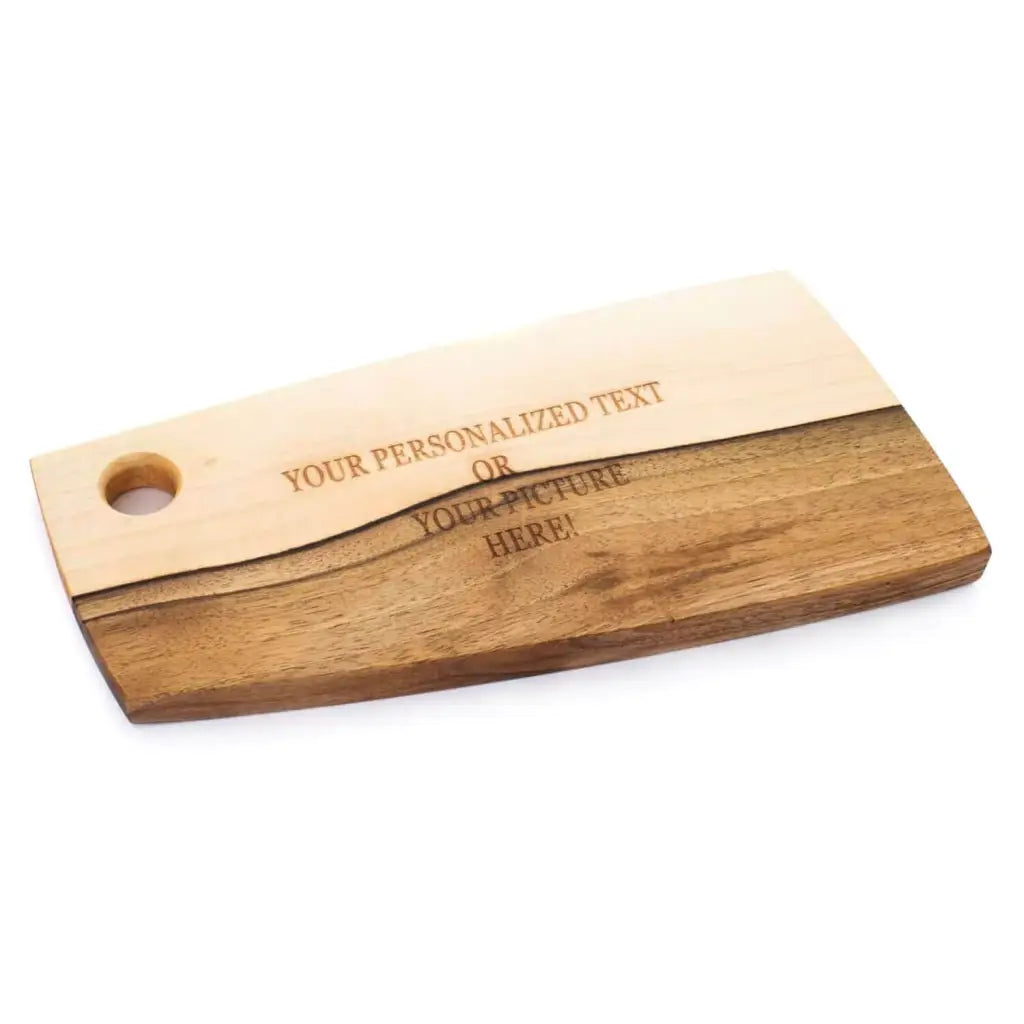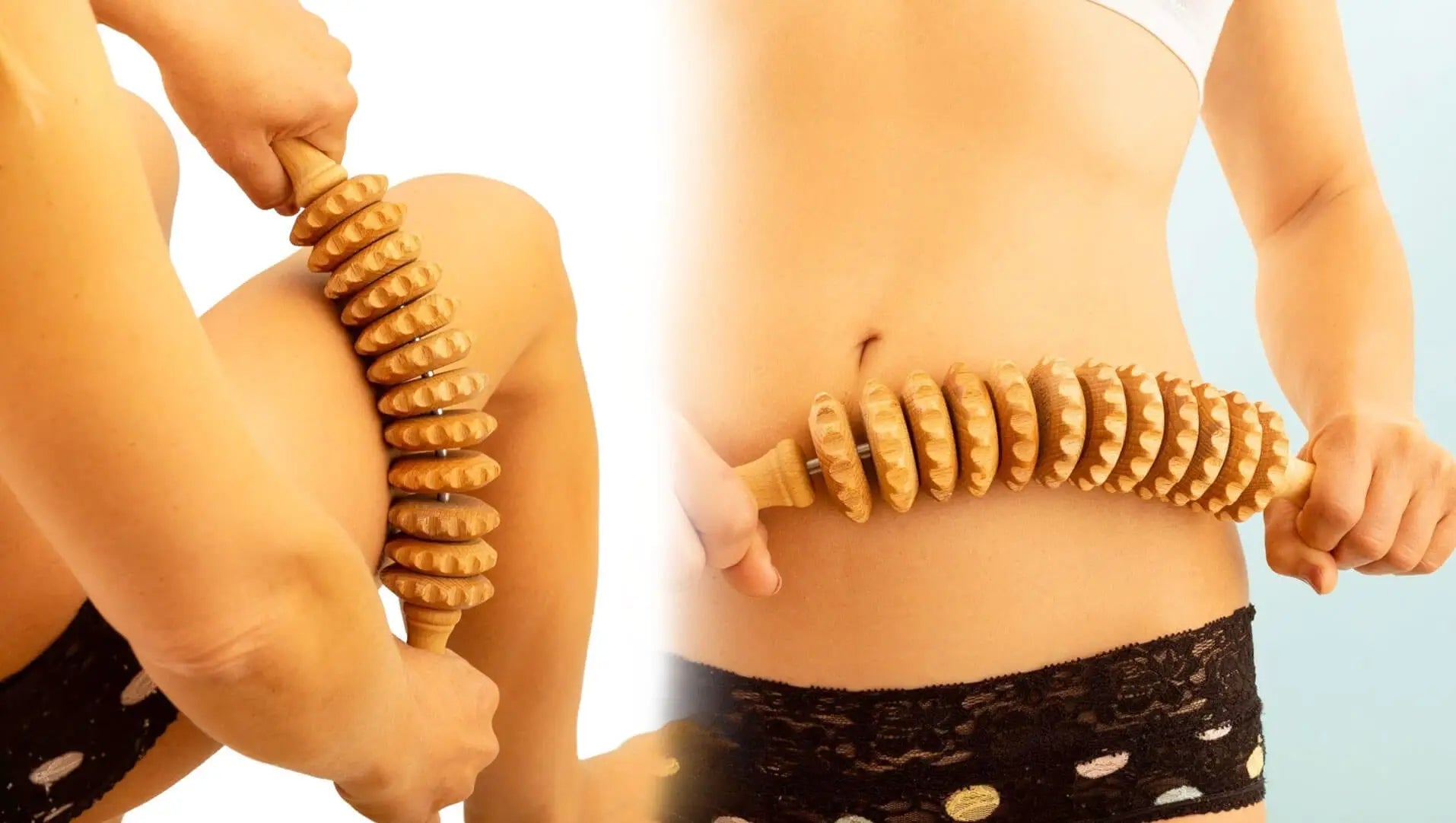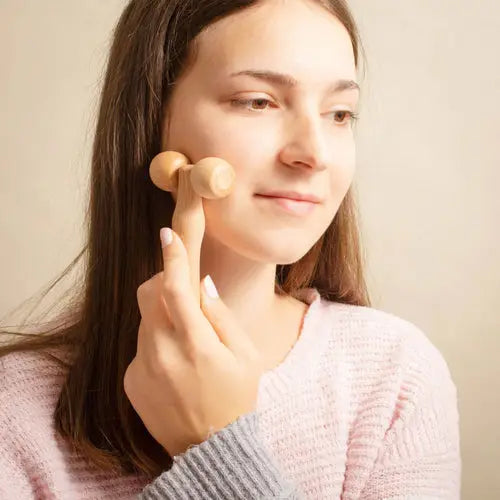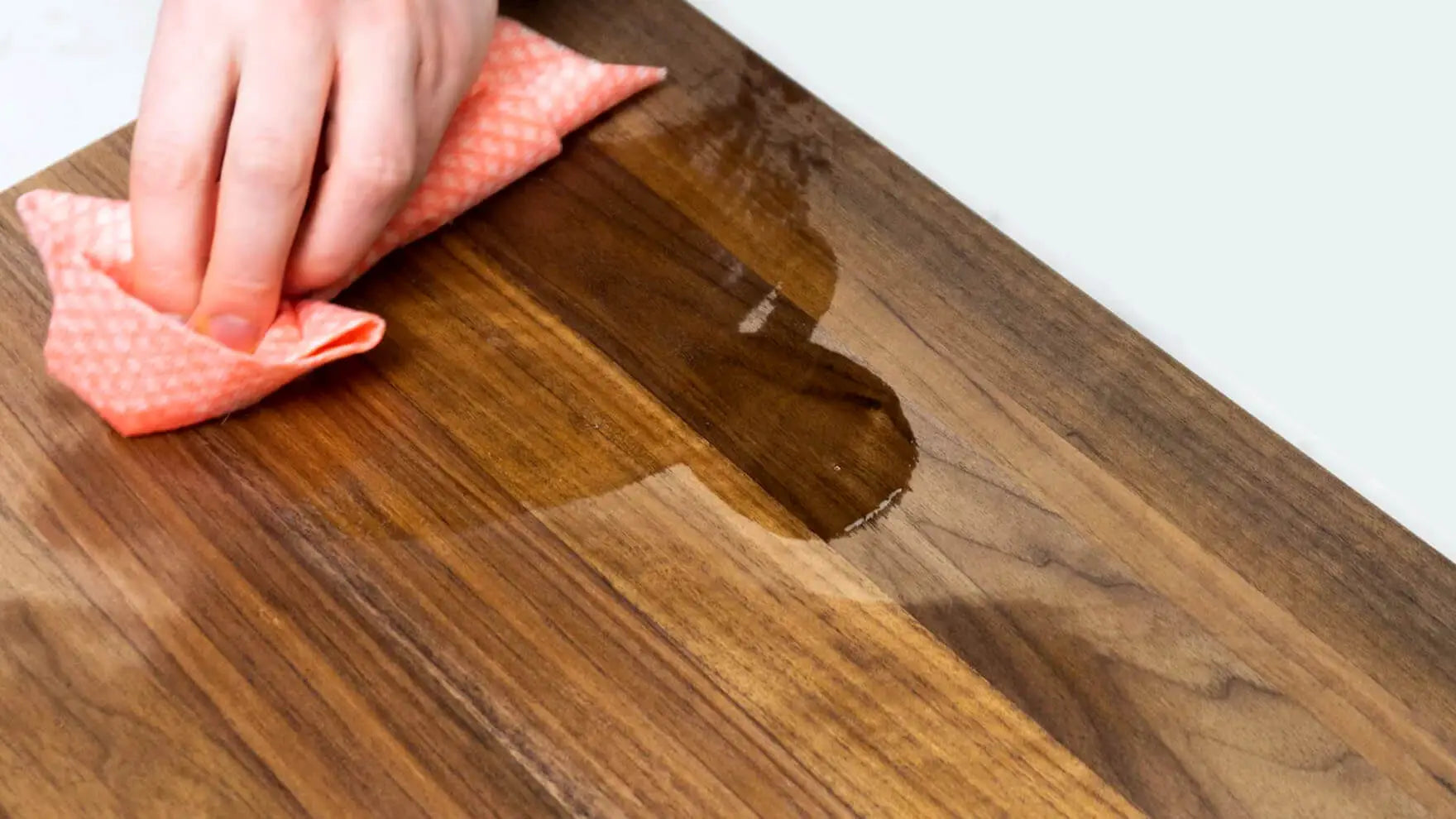
How to Clean a Wooden Cutting Board: Caring for Wood Cutting Boards & Chopping Boards
Welcome to Tuuli GmbH's guide on maintaining your wooden cutting boards with love and care! Wooden cutting boards are a chef's timeless companion, offering durability and style in every kitchen. But to keep them in top-notch condition, proper cleaning and care are essential. At Tuuli GmbH, we're passionate about helping you maintain your kitchen equipment so you can focus on creating culinary masterpieces. Dive into our expert tips to ensure your cutting boards continue to serve you with elegance and protection against wear, while enhancing the joy of cooking. Let's get started on preserving your trusty kitchen companions!
How to Clean a Wooden Cutting Board
Welcome to Tuuli GmbH’s essential guide on how to clean a wooden cutting board. Wooden cutting boards bring a touch of elegance to any kitchen, but they require proper care to maintain their beauty and functionality. Cleaning them correctly is crucial for longevity and hygiene. Let’s dive into the steps to efficiently clean a wooden cutting board and keep it in peak condition.
To begin with, always wash a wooden cutting board immediately after use. Use warm water and a small amount of dish soap to gently scrub the surface. Avoid soaking the board, as excessive moisture can cause warping or cracking. Rinse thoroughly to remove all traces of soap, ensuring that your cutting board remains safe for food preparation.
For deeper cleaning, sprinkle the board with coarse salt and use a halved lemon to scrub the surface. This not only helps to clean a wooden cutting board but also naturally deodorizes it. Rinse the board again and promptly dry it with a clean towel. This washes away residual salt and removes lingering odors.
It's vital to periodically disinfect your wooden cutting board. A solution of vinegar and water can effectively kill bacteria without harming the wood. Simply spray it onto the board, let it sit for a few minutes, and wipe it dry. Remember, proper washing and cleaning are instrumental in maintaining a safe and hygienic kitchen environment.
Over time, wooden cutting boards may accumulate stains. A paste made from baking soda and water can be applied to problem areas, left for a few minutes, and rinsed off to clean wood surfaces. Always dry the board completely to avoid moisture damage.
If your cutting board starts showing signs of age despite regular care, it might be time to rejuvenate it with oil and wax. This helps to nourish the wood and extend its lifespan. With these simple steps from Tuuli GmbH, you'll not only know how to clean a wooden cutting board, but also appreciate the charm and durability it adds to your culinary adventures.
Using Dish Soap and Other Essentials
Cleaning your wooden cutting board is crucial for maintaining its longevity and hygiene. Fortunately, using dish soap and other essentials makes this process straightforward. When it's time to clean a wooden cutting board, start by gently scraping off any food debris using a bench scraper or a similar tool. Once your wooden cutting board is free of large particles, you can move on to washing it thoroughly with dish soap. Choose a mild dish soap that doesn't leave a residue; this ensures your cutting board remains food-safe and maintains its natural wooden beauty. Next, rinse the board with warm water. Be careful not to soak the board, as excess water can lead to warping and cracking. Instead, let the water flow over it while you massage the dish soap gently into the surface. This way, you ensure effective cleaning without damaging the board. If there are residual odors, sprinkle some baking soda on the board and scrub it with a clean damp cloth or sponge. Baking soda acts as a natural deodorizer, ensuring your board returns to its fresh clean state. After washing, always dry your wooden cutting board immediately with a clean towel. Standing water on the surface can seep into the wood, causing damage over time. Hang the board or set it upright to fully air out any remaining moisture. To further protect your cutting board and keep it in prime condition, incorporate regular oiling and waxing into your care routine; this will be discussed in our upcoming guide. Keeping your cutting board clean is not just about washing it with dish soap; it also involves periodic inspection for wear and ensuring you're removing stains effectively. A well-maintained wooden cutting board is an essential component of a well-equipped kitchen, and at Tuuli GmbH, we're here to help. In the next section, we'll also explore related products to aid you in maintaining both your knife and board. Remember, caring for your kitchen tools signifies extending their lifespan, and a clean wood cutting board is a joy to use every day.
Caring for Wooden Cutting Boards
Caring for wood cutting boards is an essential task to ensure they last for years while adding a touch of rustic charm to your kitchen. Wooden cutting boards, with their natural beauty and durability, require a bit of TLC to stay in pristine condition. The key to maintaining these wood boards is a regular cleaning routine. After each use, gently wash your cutting board with mild dish soap and warm water to keep the board clean. Avoid soaking your wooden cutting boards, as excess water can cause the wood to warp or crack over time.
To further protect your board, applying a quality board oil is essential. This not only hydrates the wood but also creates a barrier against bacteria and moisture. With regular oiling, your cutting boards will remain supple and resilient, ready for any chopping task. When choosing a board oil, opt for food-safe options like mineral oil or those specifically designed for wood care. Incorporating wood oiling into your routine is vital for maintaining the functional and aesthetic qualities of your cutting boards.
Consistent care includes a monthly deep clean and oiling session. First, sprinkle coarse salt on your wooden board, then scrub it with a halved lemon to lift odors and stains. Rinse thoroughly and allow it to dry upright to prevent moisture retention. Once dry, apply the board oil with a clean cloth, rubbing it in following the wood's grain, and let it soak overnight for optimal absorption.
Wood cutting boards not only serve as essential kitchen tools but also enhance the culinary workspace's ambiance. Caring for your boards not only prolongs their life but also ensures a clean and safe surface for food preparation. Regular maintenance of wooden cutting boards will undoubtedly elevate your kitchen experiences, promising years of reliable service and beauty. Remember, a well-cared-for cutting board speaks volumes about a kitchen’s heart, where culinary magic begins. By integrating these simple practices, you'll keep your wood cutting boards in excellent condition, inspiring your culinary endeavors.
How to Oil and Wax Your Board
To truly elevate the longevity of your beloved wooden cutting board, you've got to embrace the nourishing power of oil and wax. As you know, keeping your board in top-notch condition isn't just about battling stains with dish soap or disinfecting post-cutting, it's also about oiling and waxing. Start with a high-quality board oil designed specifically for wooden surfaces. This will not only enhance the beauty of the wood but also protect it from knife marks that might sneak through during those fierce chopping sessions. Remember, your cutting board deserves as much care as your favorite set of knives; they work hand in hand to create culinary magic, after all! Begin by cleaning your board thoroughly, making sure it's completely dry. Pour a generous amount of oil onto a soft cloth, and work it into the board in the direction of the grain. The key is to use enough oil to saturate the wood but not so much that it feels greasy. Let the board oil sit for a few hours or even overnight to really seep into the heart of the wood. This step is crucial, as it prevents your wooden cutting board from warping and cracking over time. After oiling, it's time to apply board cream which often contains natural waxes that provide an additional protective barrier. This process helps in sealing the board, keeping moisture out, and giving your wooden friend a resilient, polished shine. Apply the board cream in a similar manner as the oil, ensuring every nook and cranny is covered. Regular oiling and waxing will help maintain your cutting board's functionality and aesthetic appeal, making it a delightful addition to your kitchen adventures. As part of caring for your cutting board, remember to store it properly, ensuring it doesn't stay damp after use. With these steps, your wood will remain beautiful and your knife will glide effortlessly, maintaining the sharpness and grace that comes with a well-maintained board. Truly, a well-conditioned board is the unsung hero of your kitchen space!
Knowing When to Give Up on Wood Boards
Wooden cutting boards are a fantastic asset in any kitchen. At Tuuli GmbH, we understand you want your wood boards to last, but there comes a time when you might need to say goodbye. Let's dive into knowing when it's time to part ways with these cherished kitchen tools.
Firstly, inspect your wooden cutting board regularly for deep grooves or cracks. Over time, knives create marks on the surface, and while some wear is normal, excessively deep grooves can harbor bacteria, making your cutting board less hygienic. If you've tried repeatedly to sand and seal the board to no avail, it may be time to consider replacement.
Water damage is another red flag. Wood is porous and extended exposure to water can cause the wood to warp or split. If your board becomes significantly warped, making it unsteady for cutting tasks, it no longer provides a safe surface for your culinary needs. Repair attempts often prove futile if the damage is extensive.
Additionally, an unpleasant or permanent odor that persists even after cleaning and maintaining your wood boards is a strong indicator that it's time to move on. The absorption of smells can signal that the wood has become compromised, likely absorbing bacteria alongside those odors. Remember, Tuuli GmbH offers a range of products to help keep your wooden cutting boards in mint condition, but even the best caring regimes can reach the point of no return.
Lastly, excessive splintering of the wood indicates that the cutting board's fibers are beginning to break down. Continued use of such a board can result in wood splinters in your food, which no cook wants!
Understanding these signs ensures that your cooking remains safe and enjoyable. While it might be tough to retire a cutting board that has seen many a delicious meal prepared, it's essential to prioritize safety and hygiene in the kitchen. Keep an eye on these indicators, and when the time comes, rest assured that Tuuli GmbH has a perfect replacement waiting for you. Embrace fresh beginnings with new wood boards ready for many more culinary adventures!
Advantages of Regular Cleaning of Wooden Kitchen Cutting Boards
- Prevents Bacterial Contamination
- Maintains Optimal Hygiene
- Preserves the Natural Beauty of Wood
- Extends the Lifespan of the Cutting Board
- Reduces Risk of Foodborne Illnesses
- Enhances Food Safety
- Prevents Cross-Contamination
- Maintains Smooth Cutting Surface
- Retains the Cutting Board's Natural Smell
- Ensures Effective Food Preparation
Repairing a Damaged Wooden Cutting Board
Wooden cutting boards are a kitchen essential, but with regular use, they may suffer damage. Fear not! Here’s a guide on repairing a damaged wooden cutting board, ensuring your board gets a fresh lease on life.
The first step is to assess the damage. Small scratches and minor cuts on the wood cutting board can often be remedied with a bit of sanding. Using fine-grit sandpaper, gently sand the damaged area until it’s smooth with the rest of the board. Remember to always sand in the direction of the wood grain to prevent further damage. Once you’ve completed sanding, wipe away any wood dust with a damp cloth, and be sure to dry the board thoroughly afterward.
For deeper cuts or gouges, you may need to apply a wood filler. Make sure the filler matches the color of your board. Fill in the damaged sections, let it dry completely, and sand it down until it's flush with the surface of the wood. After repairing a damaged wooden cutting board using filler, always oil the board to restore moisture. This will not only nourish the wood but also enhance the appearance.
If your board has become warped from excessive moisture, it's time to take action. First, lay the board flat on a dry surface, placing a damp towel on top. Using a hot iron, apply heat to the towel to introduce steam. This technique helps in flattening the wood by rehydrating and reshaping it. However, ensure to dry the board completely once you’re done to prevent mildew.
Keep in mind that proper maintenance can prevent most damage. Regularly oiling your wood cutting boards, especially after cleaning, minimizes the chances of cracks and warping. Should your board be beyond repair, Tuuli GmbH offers a delightful range of boards that combine both function and aesthetics, ensuring you have a reliable and beautiful tool in your culinary arsenal.
Removing Stains and Keeping Your Board Clean
Welcome to the art of removing stains and keeping your board clean as you care for your beloved wooden cutting boards. A wood cutting board is a kitchen treasure and deserves proper attention to ensure it lasts for years. After countless hours of cutting–be it chopping veggies or slicing meats–your board will naturally pick up some stains and odors. But fear not! With just a handful of household items like hydrogen peroxide, baking soda, and kosher salt, your cutting board will soon look as good as new.
Start by sprinkling a generous amount of baking soda over the entire board. Baking soda's gentle abrasiveness will help lift stains without damaging the wood. Add a touch of water to create a paste, and scrub it lovingly into the board. For deeper stains, hydrogen peroxide can be your best friend. Use a microfiber cloth to apply a thin layer of hydrogen peroxide directly onto the stains, and let it sit for a few minutes. This will work its magic, lightening the stains and disinfecting the board at the same time. Rinse well and pat dry.
Kosher salt is another secret weapon in the war against stains. Generously sprinkle the salt on the board and use a sliced lemon to scrub the board. The citric acid in the lemon not only tackles odors but, when combined with the salt, aids in exfoliating stubborn stains and grime. After rinsing and drying, make sure your cutting board always dries upright to prevent moisture buildup, further helping in keeping your board clean and safe for all your cutting endeavors.
By regularly employing these techniques, you ensure that your wood cutting board remains in impeccable condition, allowing you to enjoy your culinary adventures without the worry of lingering stains or dulling your cutting experience. Tuuli GmbH encourages consistent care to maintain the timeless charm and functionality of your cutting board.
Disinfecting Wooden Cutting Boards Post-Cutting
When it comes to disinfecting wooden cutting boards post-cutting, taking a few crucial steps ensures their longevity and keeps them safe for food preparation. After you've finished chopping your fresh veggies or slicing your succulent meats, it's vital to maintain the hygiene and quality of your wooden cutting board. Start by rinsing the board immediately after cutting to prevent food particles from embedding. Once rinsed, apply a mixture of hydrogen peroxide and baking soda over the board clean surface. This dynamic duo helps to sanitize effectively by breaking down any lingering bacteria left behind from the cutting process.
Additionally, using kosher salt can enhance your cleaning routine. Sprinkle a generous amount over the surface of your board and gently scrub with a sponge or cloth. The coarseness of kosher salt acts as a mild abrasive, assisting in removing stubborn bits of food while aiding in further disinfecting wooden cutting boards. Remember, each step you take to sanitize not only prolongs the life of the board but also ensures that your kitchen remains a safe haven for culinary creativity.
In contrast to plastic cutting boards and stainless steel counterparts, wooden boards boast a natural beauty and resilience that, with proper care, lasts a lifetime. While cutting on these boards, the porous nature of wood can often trap bacteria, making it essential to routinely clean and sanitize them. It’s important to avoid submerging during the cleaning process to prevent warping and separation.
Maintaining cleanliness also involves considering when to oil and wax your board, as highlighted in prior discussions. Although wooden cutting boards require a bit more attention than stainless steel surfaces, the warm charm they add to a kitchen makes it a worthy effort.
Through consistent care and effective cleaning practices like using hydrogen peroxide, you're not just keeping your board clean, you're preserving its quality and charm.
Before we dive into related products for maintaining your knife and board in the next section, remember, a well-maintained wooden cutting board can be an invaluable tool in your kitchen, ensuring that your culinary adventures with Tuuli GmbH are always safe and enjoyable.
| Reason for Cleaning | Description | Importance |
|---|---|---|
| Hygiene | Regular cleaning prevents the growth of harmful bacteria like Salmonella, E. coli, and Listeria. | High |
| Odor Prevention | Cleaning removes food particles and prevents residual smell from old foods, especially pungent ones like garlic and onions. | Medium |
| Longevity of Cutting Board | Regular cleaning maintains the wood condition and prolongs the life of the cutting board by preventing warping and cracking. | High |
| Aesthetics | Clean cutting boards maintain a pleasant and inviting appearance in the kitchen, which can be visually appealing. | Low |
| Food Safety | Ensures that raw and cooked foods do not cross-contaminate, especially when preparing different types of ingredients. | High |
| Mold Prevention | Proper drying and cleaning prevent moisture retention, which can lead to mold growth on the board. | Medium |
| Flavor Preservation | Prevents different flavors from transferring from one food to another, ensuring pure taste. | Medium |
Related Products for Maintaining Your Knife and Board
At Tuuli GmbH, we understand that maintaining your knife and board is crucial to ensuring their longevity and keeping your kitchen running smoothly. A wooden cutting board is not just a tool; it's a piece of nature right in your home, adding charm and functionality to your workspace. To care for your beloved wood cutting board, regular cleaning using dish soap, oiling, and waxing are essential steps we've discussed before. But to take your board maintenance to the next level, you'll need some related products that will help preserve its life and keep its surface pristine.
The first step in nurturing your wooden cutting board is conditioning with board oil. Not only does board oil keep the wood hydrated, preventing warping or splitting, but it also enhances the natural beauty of the grain, making your board look as good as new. Complementing board oil, our best board cream provides an extra layer of protection, sealing in the oil and adding a moisture barrier against the stresses of daily kitchen use.
Now, let’s talk about maintaining your knives because a quality set of knives plays an equally important role in your kitchen experience. Sharp knives help reduce the strain on your board, minimizing any unwanted scratches or indentations. Investing in high-quality knife sets ensures you have the right knife for the right cut, whether you’re creating exquisite recipes or simple home meals. Regular honing and sharpening are steps that cannot be underestimated; maintaining your knives extends the lifespan of your wood cutting board too.
Being a member of the Tuuli GmbH family means access to our curated selection of kitchen essentials. Explore our shop for everything you need to keep every aspect of your kitchen in peak condition. Our products are designed not just to maintain your knife and board, but to enrich your entire culinary journey. From wooden cutting board care to knife maintenance, Tuuli GmbH is dedicated to helping you create a home kitchen that's both efficient and enjoyable.
By following these guidelines, you'll ensure that your wooden cutting board remains a cherished kitchen companion for years to come. At Tuuli GmbH, we believe that with the right care, wood cutting boards and chopping boards can not only elevate your culinary creations but also add an aesthetic touch to your kitchen. Remember, a well-maintained board is more than a tool—it’s an investment in your cooking journey. Treat it with care, and it will reciprocate with wonderful kitchen experiences. So, take pride in preserving your board and enjoy the art of cooking with Tuuli GmbH!
FAQs
How should I clean my wooden cutting board after each use?
At Tuuli GmbH, we recommend washing your wooden cutting board immediately after use with warm water and a small amount of dish soap. Gently scrub the surface to remove any food debris and rinse thoroughly. Avoid soaking the board to prevent warping or cracking, and always dry it immediately with a clean towel.
How can I naturally deodorize my wooden cutting board?
To naturally deodorize your board, sprinkle it with coarse salt and use a halved lemon to scrub the surface. This method not only cleans but also eliminates odors. Rinse the board well and dry it promptly for the best results.
What is the best way to disinfect a wooden cutting board?
Disinfecting your wooden cutting board is easy with a mixture of vinegar and water. Spray this solution onto the board, let it sit for a few minutes, then wipe it dry. This method is effective in killing bacteria without causing any harm to the wood.
How can I remove stains from my wooden cutting board?
To tackle stains, apply a paste made from baking soda and water to the stained areas. Let it sit for a few minutes before rinsing it off. Be sure to dry the board completely to prevent moisture damage.
When should I oil my wooden cutting board?
Regular oiling is essential to keeping your wooden cutting board in good condition. Apply a food-safe board oil using a clean cloth, working along the wood grain, and allow it to soak overnight for maximum absorption. This routine helps nourish the wood and extend the board's lifespan.
At Tuuli GmbH, we craft both standard and personalized wooden cutting boards. While you explore our wooden personalised kitchen collection, here's our complete guide to keeping your board beautiful and sanitary for years to come.